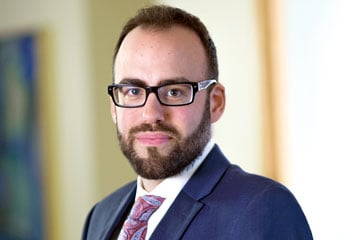
A report by a judge in Ottawa is making waves among lawyers because it reveals the statistics about the composition of juries in two Eastern Ontario regions.

Lawyers say the report shows how the system can be biased.
The report, written by Ontario Superior Court Justice Giovanna Toscano Roccamo while on a study leave at the University of Ottawa’s law school, uses the 2016 jury lists provided by the Ontario Ministry of the Attorney General and compares it with census data from the same year to identify the composition of criminal and civil juries in Ottawa and the Belleville areas.
The report looks at a total of 5,500 prospective jurors and concludes that juries in the areas studied are 10 times more likely to be drawn from predominantly white, middle-class neighbourhoods than poor, racialized ones.
The Belleville area was also chosen because it contains a First Nation; juries chosen from that region in 2016 contained no Indigenous jurors, says the report.
“Over the course of years of jury trial experience, I formed the impression that the modern jury did not always appear to represent the ‘conscience of the community’,” wrote Toscano Roccamo in her report. “My anecdotal experience was that the jury selection process, possibly compounded by the exercise of judicial discretion, habitually excluded from service racial and linguistic minorities, low-income earners, students, and caregivers.”
The trend of jury representativeness was the driving force behind Toscano Roccamo’s report, according to the report. Toscano Roccamo declined to comment for the story.
Toscano Roccamo also noted the timeliness of the study given the press coverage of the cases involving the deaths of Indigenous youths Colten Boushie in Saskatchewan and Tina Fontaine in Manitoba. The report comes with no analysis or recommendations, which was a conscious decision on the part of Toscano Roccamo.
“As a sitting justice of the Superior Court of Justice for Ontario, I have not and will not play a part in advancing any political agenda incorporating policy changes and legislative reforms directed at enhancing jury representativeness,” Toscano Roccamo wrote in the report.
The report — which is now publicly available through the Canadian Judicial Council — has attracted the attention of the defence bar.
“It provides objective empirical data [that] proves that white, wealthy, home-owning Ottawans are exponentially more likely to be chosen for a jury than poor, racialized people living in rental or community housing,” says Solomon Friedman, managing partner with Edelson & Friedman Barristers LLP in Ottawa, who is also the treasurer of the Defence Counsel Association of Ottawa.
“That’s offensive to our understanding of a jury trial,” adds Friedman. “The state doesn’t get to select which types of people it wants on a jury. ”
Friedman says that, for his practice, the juries are not representative of the people who come before the court because of systemic issues in the system.
“The way juries are selected in Ontario is fundamentally unfair and flawed,” says Friedman.
“By relying on the Municipal Property Assessment Corporation, the system selects for homeowners only.”
Ontario’s Debwewin Committee, formed in 2013 to report back on how to improve the participation of Indigenous people in the jury process, is years overdue in making its final recommendations.
The Ministry of the Attorney General told Law Times in August 2017 that the final report was being prepared, but it has still not been released.
In her report, Toscano Roccamo stated that she chose the two regions based on time and resources available to her.
Friedman says that he doesn’t believe there are any other studies on jury composition available in Ontario.
The Canadian Judicial Council notes that Toscano Roccamo’s study leave was granted by the Governor in Council and that five or six judges take study leaves each year in order to engage in research or to teach at a Canadian institution.
“As Justice Toscano Roccamo’s report included some information that could be of interest to the public, her report was made public in an effort to contribute to the discussion,” said CJC director of communications Johanna Laporte in an emailed response. “The council expresses no views on the merits or her findings.”
Michael Lacy, president of The Criminal Lawyers’ Association, says the results of the report could easily be extrapolated to Ontario regions other than just Ottawa and Belleville.
Lacy notes that, while the federal government is proposing changes to how juries are selected from pools, such as eliminating peremptory challenges, the CLA opposes the move because the actual issue is the lack of diversity in the jury pool itself.
“That’s the job of the province, not the job of the federal government,” says Lacy.